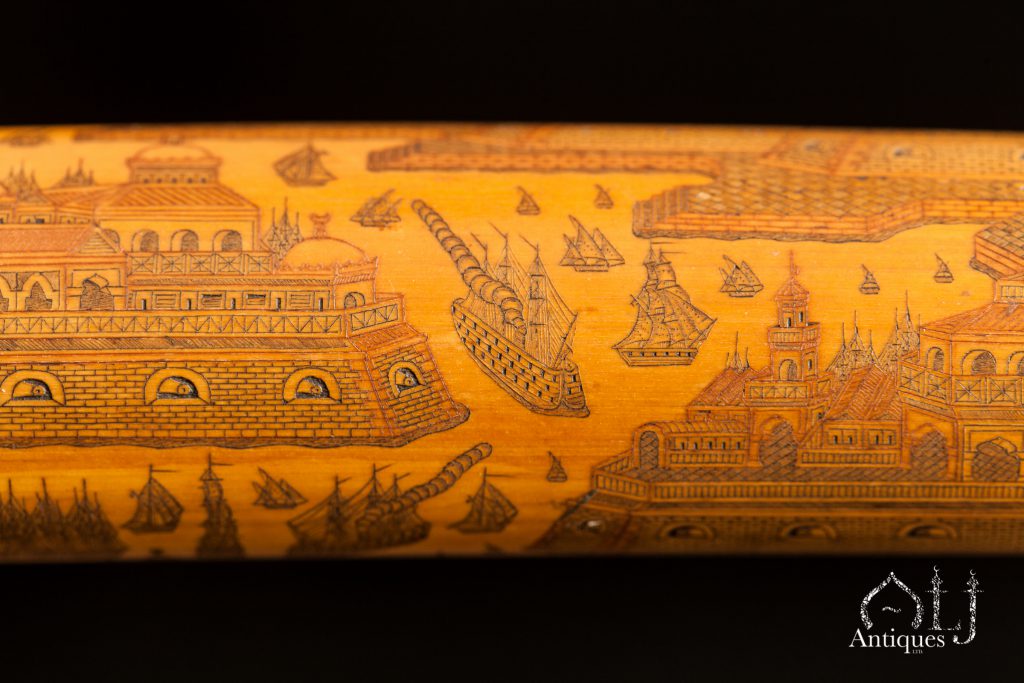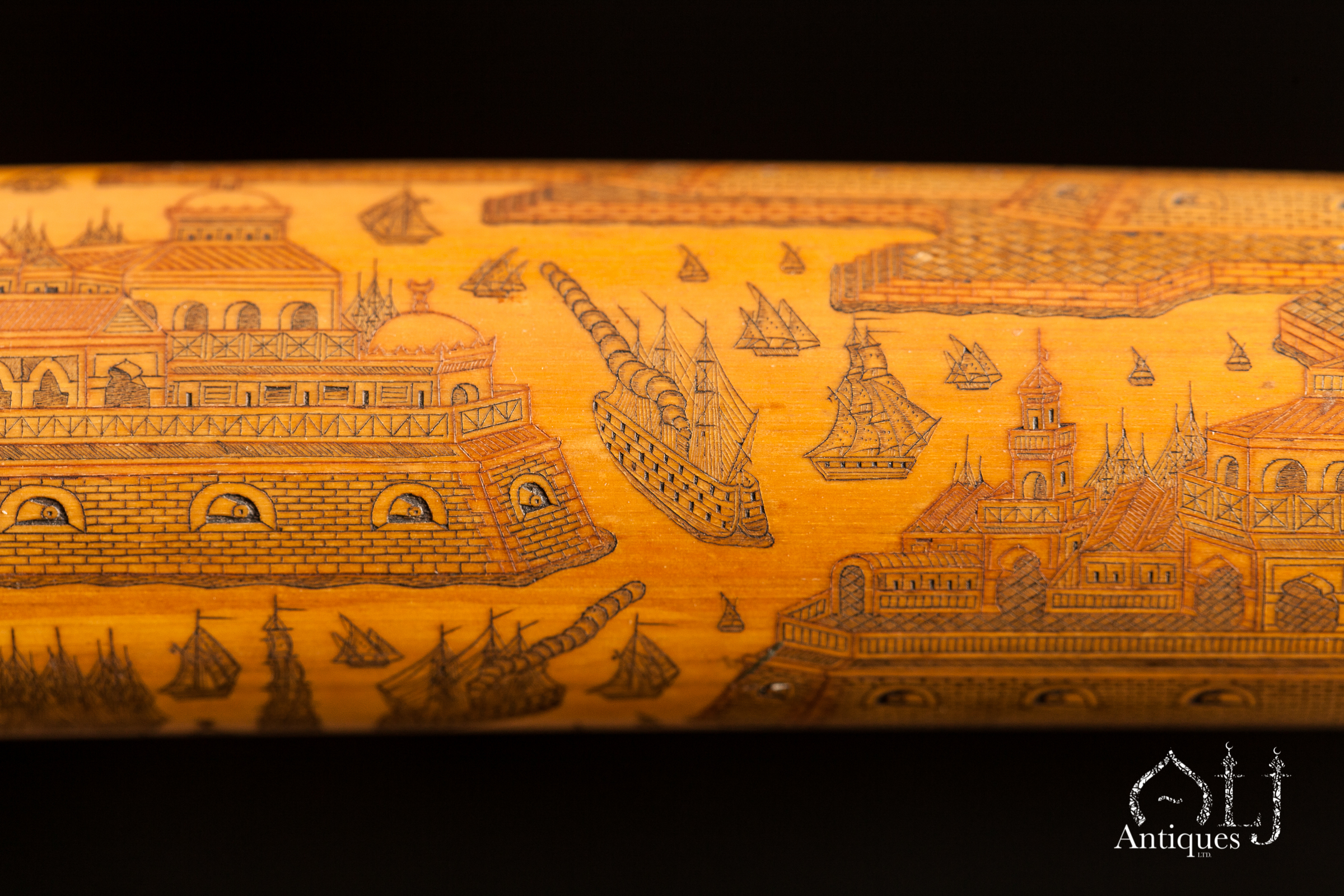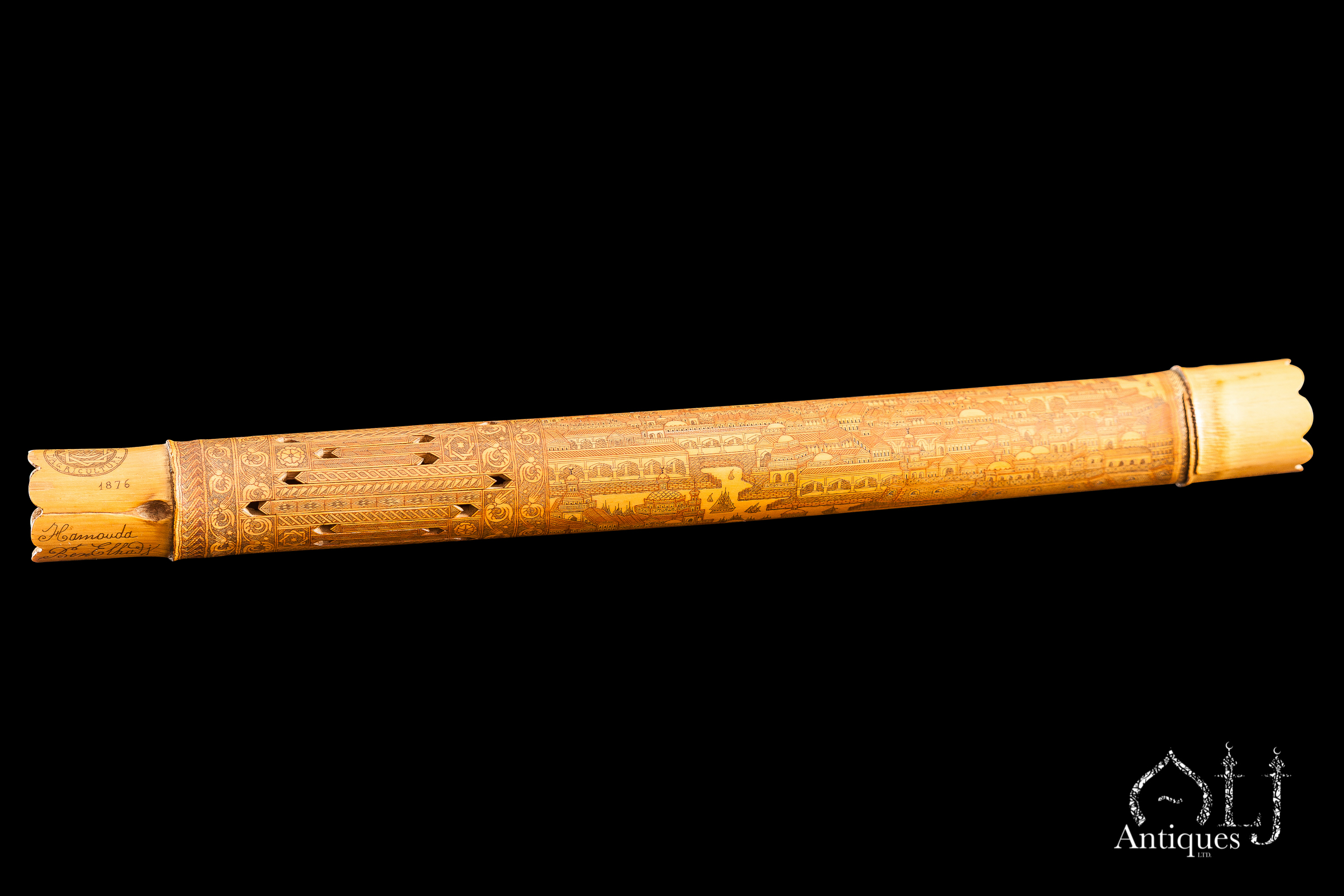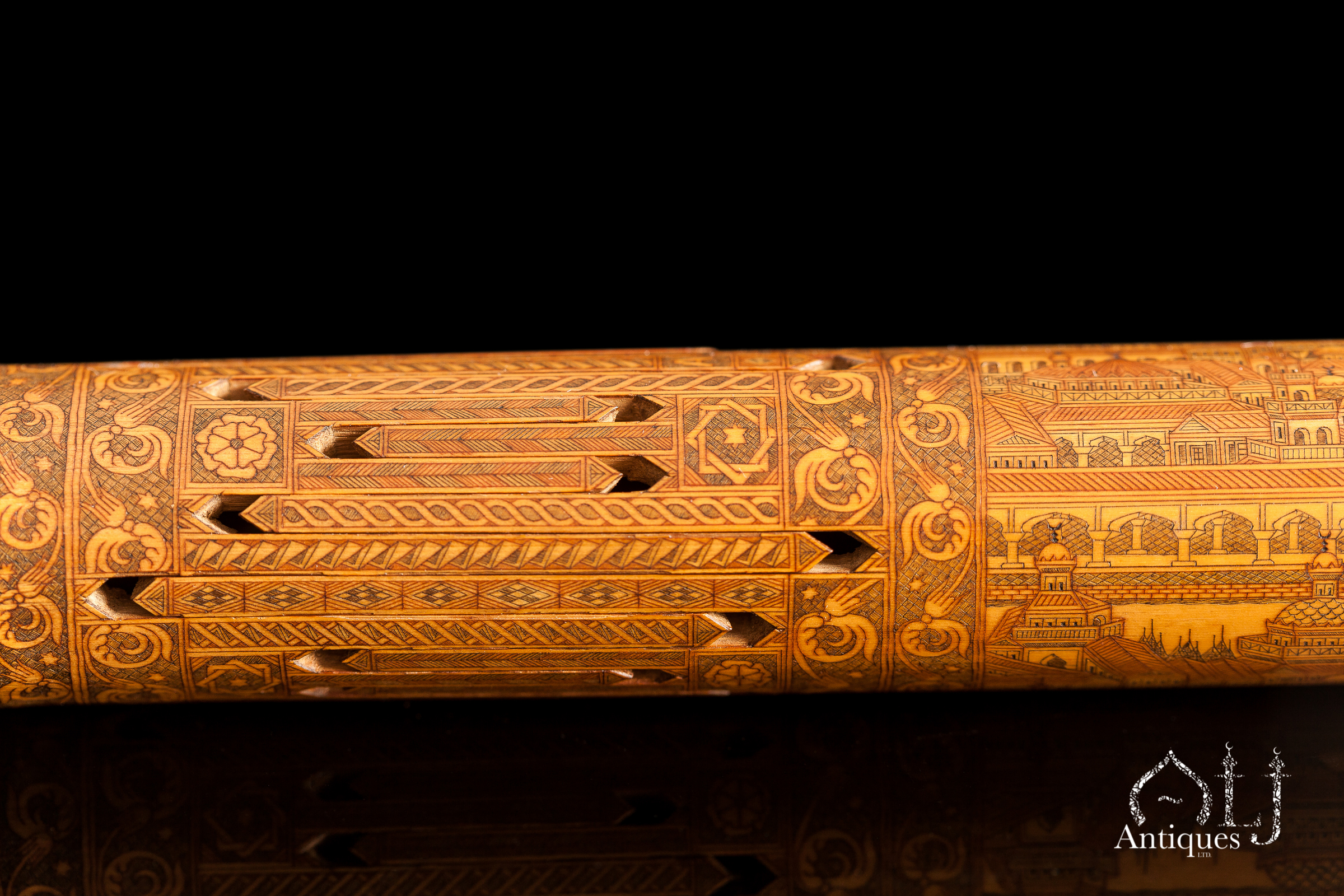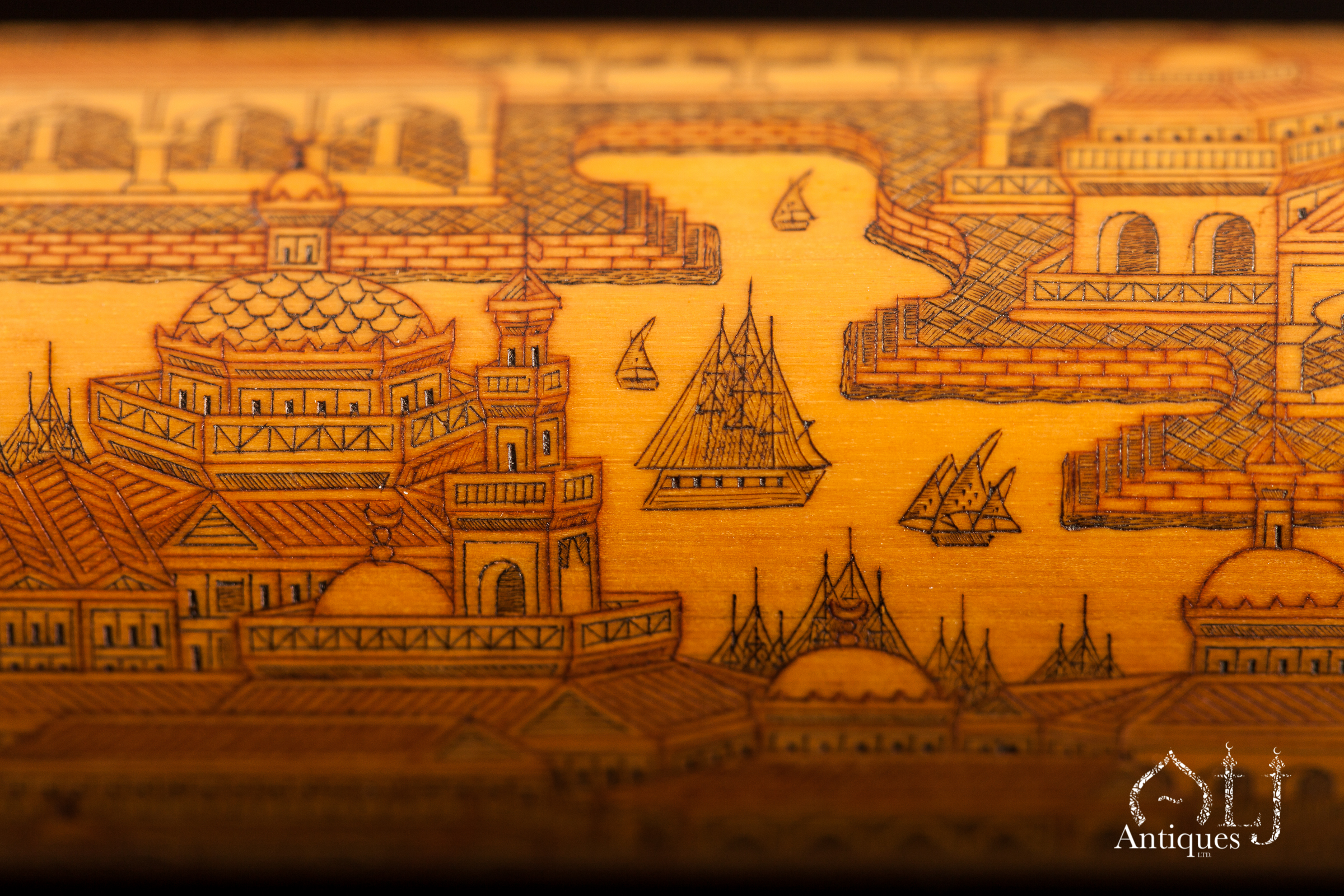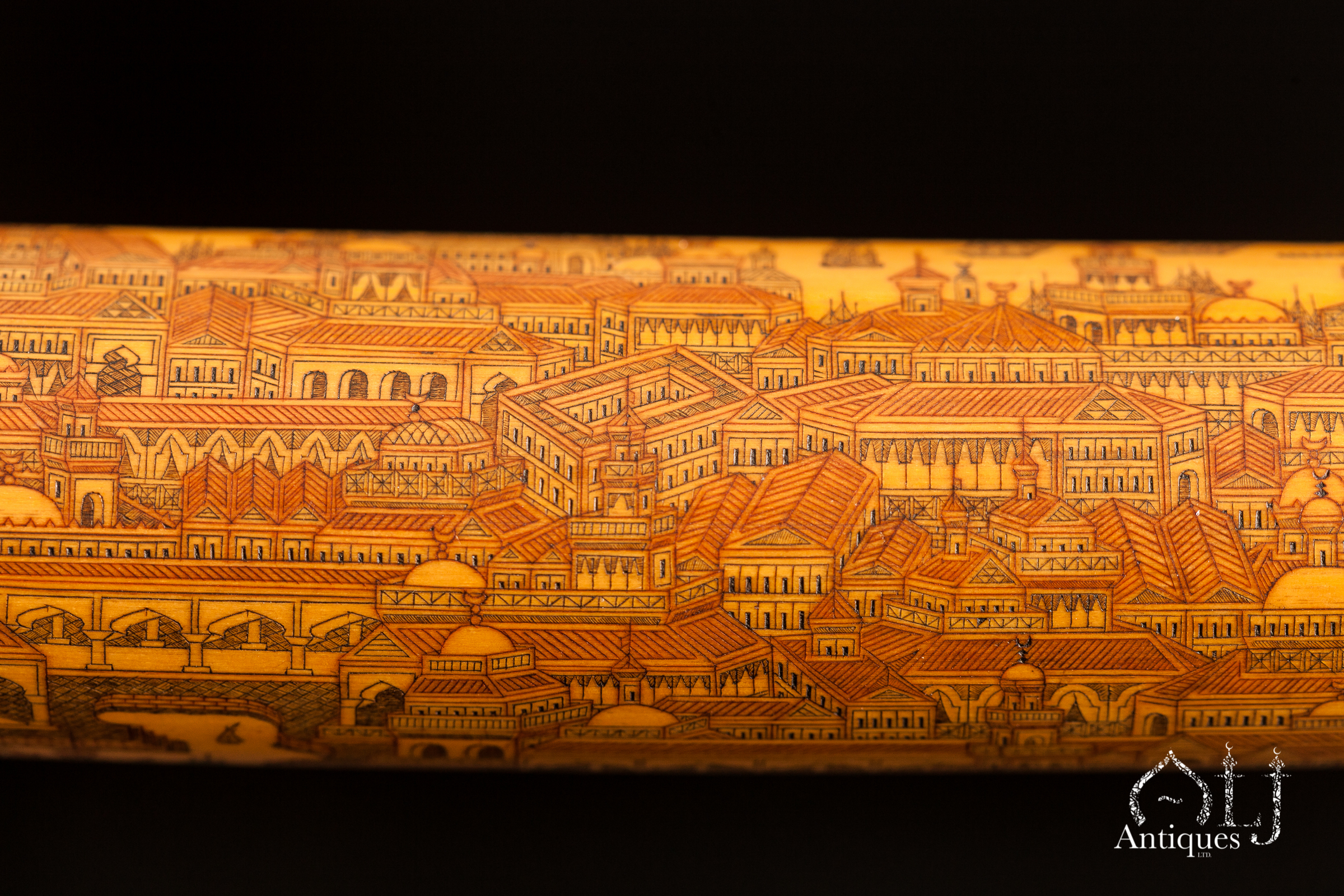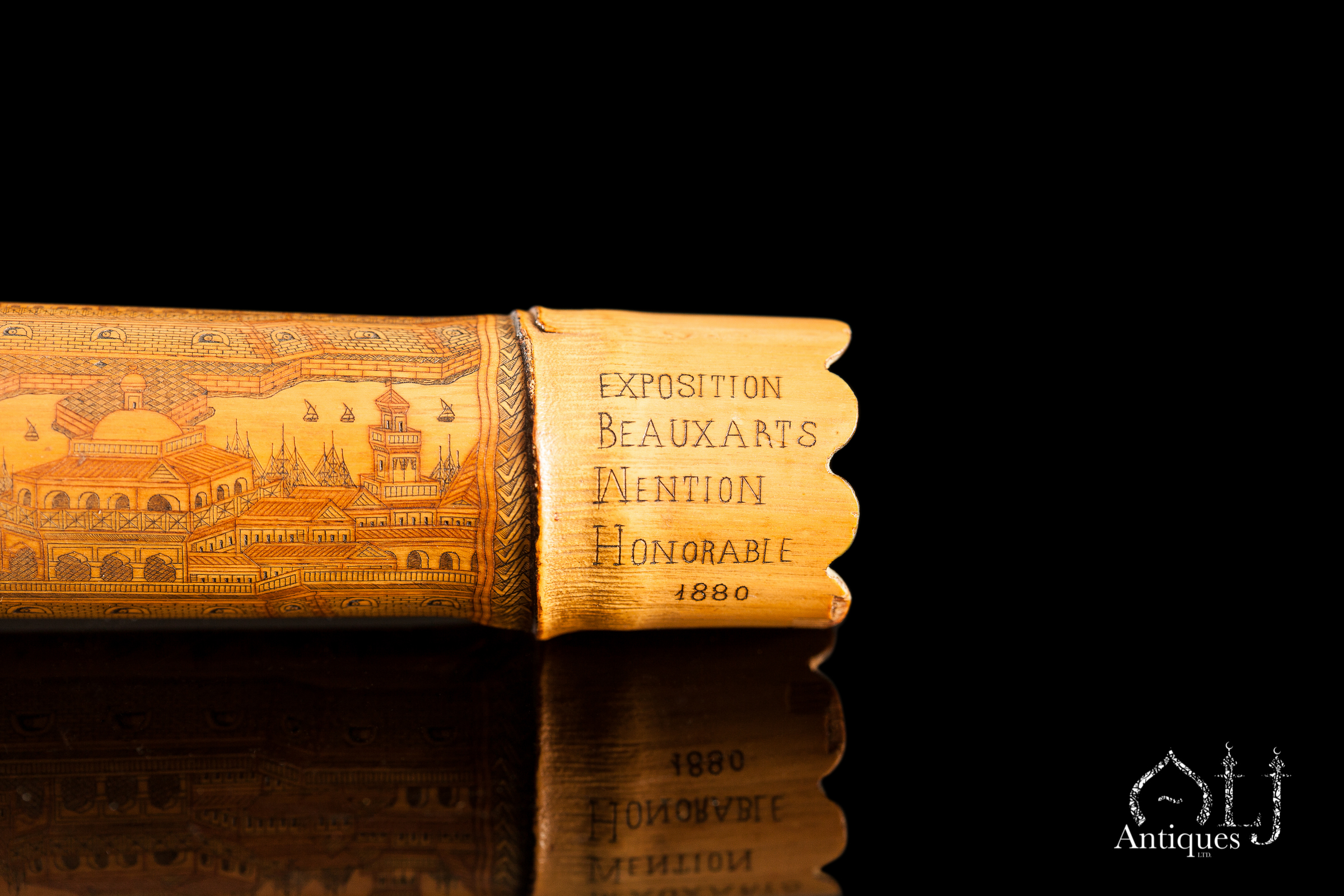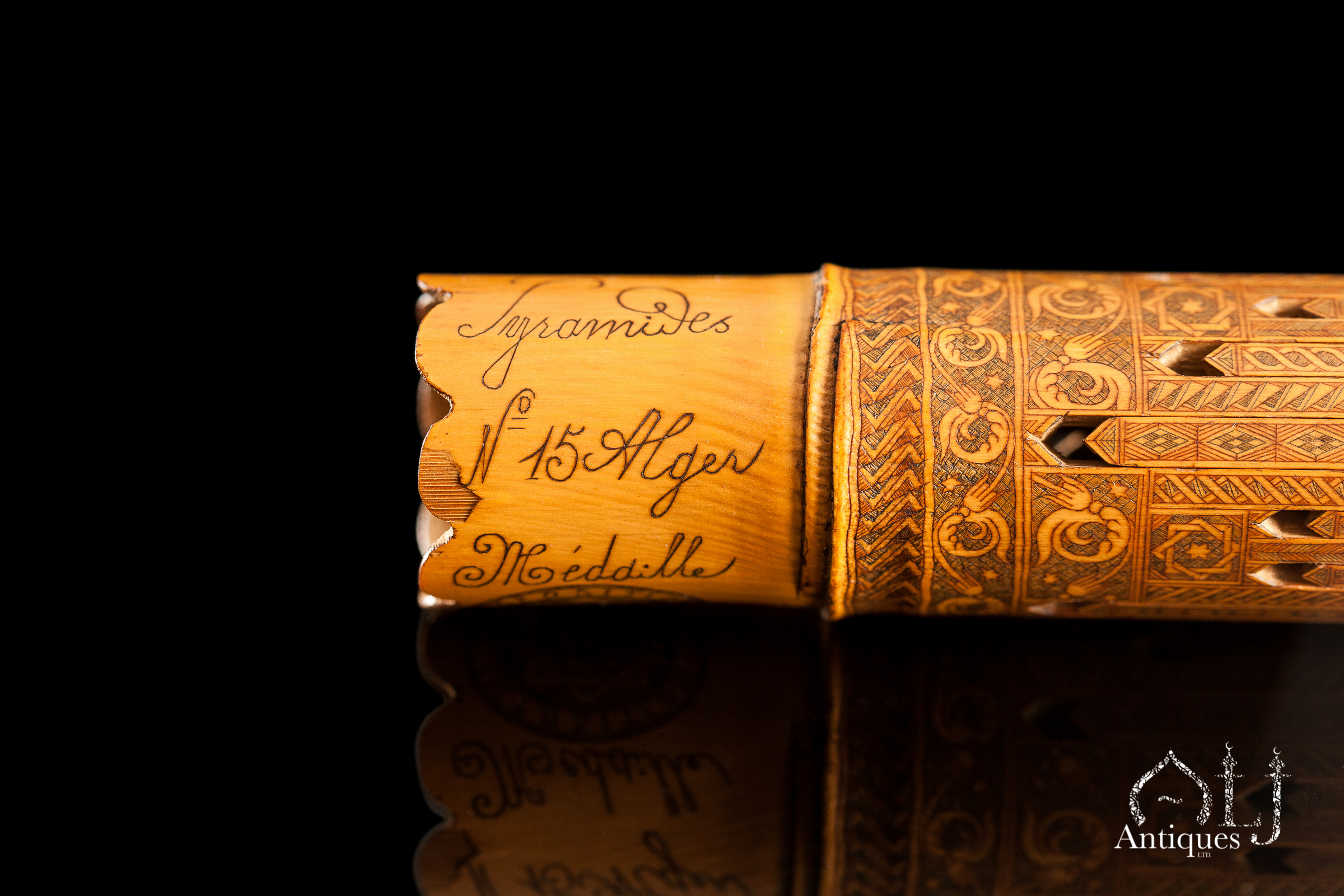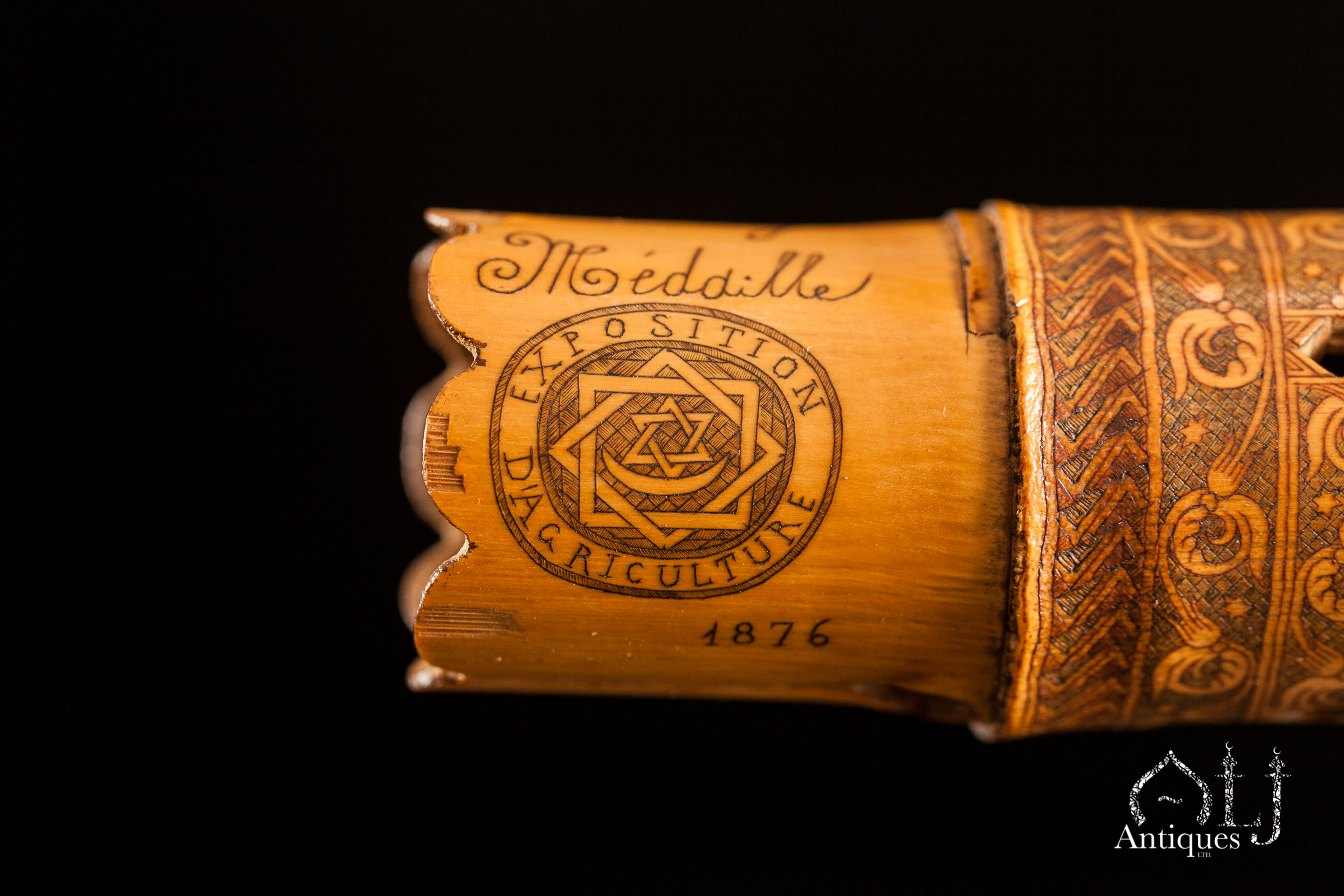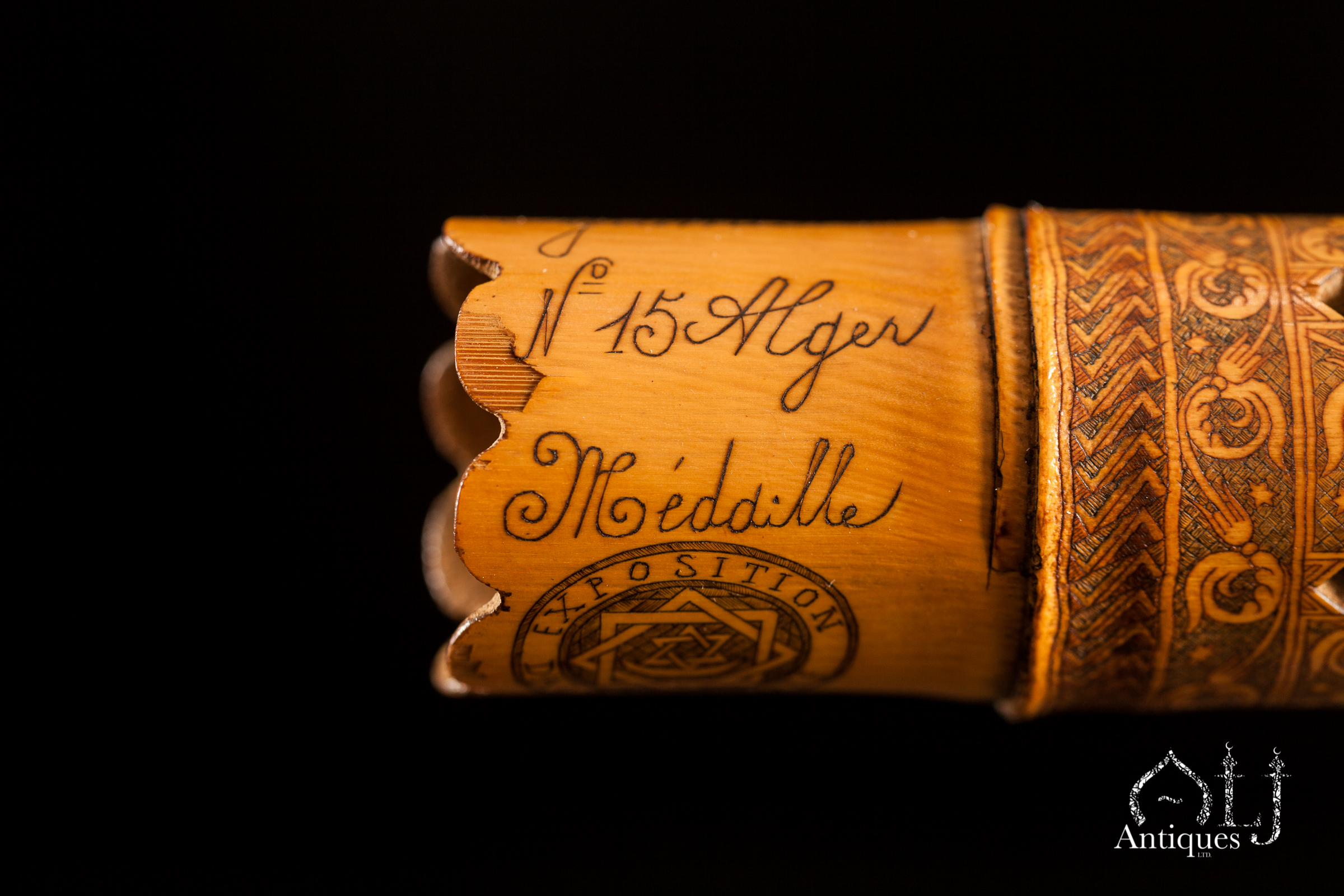Description
This Very Rare Ottoman Engraved, Painted and Lacquered Reed or Tube Cane Constructed In the Form of A Document Holder Depicting an Ottoman City & Harbour Probably of The City Of Istanbul, Signed by the Algerian Wood Engraver Master Hamouda Ben Elhaj, Algeria, Dated 1876 AD.
Since ancient times different objects were made out of reed grass. Reed usually grows in the Mediterranean, and is scientifically known as Arundo donax. Arundo donax is quite similar in appearance to Bamboo but is not as hard. It grows to its full size within a year. The natural hallow stem construction and the elastic qualities of the reed fibres that are lying in parallel position gives it enough strength to withstand the strongest of storms. Reed was a major source used for writing and was considered as a major tool of calligraphy. The cut reed was used as pens and brushes by Muslim calligraphers. Historically, the ancient Egyptians used the leaves of the reed to make writing papers known as papyrus.
This rare piece was either made as document holder or as a scribal equipment container used for carrying brushes, reed pens and / or a roll of paper. The lot is of a cylindrical shape and consists of two pieces, each engraved, painted (with black and red on a beige ground), and lacquered with scenes depicting an imaginary view of a large Ottoman coastal city or harbour, most probably of the Ottoman capital, the city of Istanbul. These views usually depict various Ottoman buildings of Islamic style and architecture with clear crescents on top of domes and minarets, large mosques, waterways and ships including steam engine ships which started to be more common in the latter half of the 19th century and that proves that our present lot belongs to that era.
Our lot is made in the shape of a cylindrical compartment made of two pieces, each given one serrated ending so that they lock into each other tightly. The artist engraved the letters A and B on the two separate pieces to help the user achieve an easy and firm closure. The letters A and B will be adjacent to each other when the compartment is tightly closed. Natural knots are left as natural blocking elements.
This magnificent lot was awarded two prizes in the second half of the 19th century, and the artist had documented this fact by engraving the description of each award at each end of the compartment. At one end, the artist has documented the winning of a medal at an agricultural exposition in 1876 whose address is given as Rue du Pyramides, No.15 Alger (No. 15 Pyramids Road, the city of Algiers). At the other end, the artist has recorded the fact that this piece had been awarded the “Exposition Beaux Arts Wention Honorable” in 1880.
Condition: Excellent, minor chip to one end.
Dimensions: 28.5 cm long.
3 cm across.

